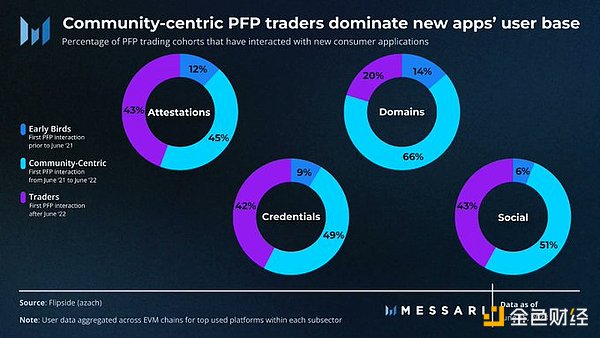Messari: Exploring the Evolution of the Web3 Community
Messari: The Web3 Community's EvolutionAuthor: @MessariCrypto Translation: Plain Language Blockchain
Historically, profile pictures (PFPs) as an NFT have been primarily focused on community projects. @0xallyzach explains how this led to users migrating to Web3 platforms that emphasize community involvement.
With the launch of @BoredApeYC (BAYC), the rise of private sector fundraising and partner community is apparent. Its community-centric approach has attracted retail investors, leading to a surge in user adoption in the #NFT market. But with the introduction of professional trading platforms, this has changed.
Platforms like Blur and OpenSea have embraced professional trading, focusing on trading activity rather than community and roadmap. This narrative shift reduced creator royalties and turned NFTs into speculative assets. The situation has changed, becoming more favorable to traders.
- Viewpoint: Arbitrum leads the way into the Layer3 era, Orbit’s innovation and risks
- Is the trend of ordinals spreading to ETH a return or a throwback?
- Long Push: The Opportunities and Challenges of the L3 Era with the Launch of Arbitrum Orbit
As PFP projects decline in attracting new users, consumer applications have emerged. They offer decentralized social media, digital identity, and blockchain-based domains. These applications provide meaningful human connections, self-expression, and foster community awareness.

These consumer apps attract previous crypto users and new users by providing comprehensive representations of digital identity, and have become the leading apps for first-time #NFT interactions, surpassing traditional markets.

Users still seek to establish online roles, and consumer apps provide tools to replicate this experience. Users are willing to interact with these platforms across different chains, highlighting the importance of improving interoperability and cohesive user experiences.

Looking forward, consumers will continue to seek meaningful connections and unique identities. These new consumer apps provide valuable experiences and promote long-term growth, undoubtedly thriving through protocols that consider natural network effects by connecting users.
We will continue to update Blocking; if you have any questions or suggestions, please contact us!
Was this article helpful?
93 out of 132 found this helpful
Related articles
- Analysis of FalconX’s On-Chain Behavior: Will the Impact of SEC Persist and Will Institutions Seize the Opportunity to Buy Low?
- The First Step of Ethereum Modularization: Introduction and Working Principles of Proto-danksharding
- AI robots are opening up new horizons
- AI can’t save 618 either.
- Understanding How Proto-Danksharding Accelerates Ethereum’s L1 Rollup Scalability
- Due to recent advancements, Web3 usernames may receive more adoption.
- TVL dilemma of ZkSync Era: The latecomers take the lead






